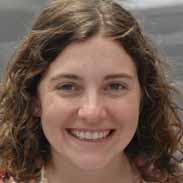AP Human Geography Services/Urban Patterns Vocab. – Flashcards
Unlock all answers in this set
Unlock answersquestion
Central Place
answer
A market center for the exchange of services by people attracted from the surrounding area.
question
Central Place Theory
answer
A theory that explains the distribution of services based on the fact that settlements serve as centers of market areas for services; larger settlements are fewer and farther apart than smaller settlements and provide services for a larger number of people who are willing to travel farther.
question
Clustered Rural Settlement
answer
A rural settlement in which the houses and farm buildings of each family are situated close to each other, with fields surrounding the settlement.
question
Dispersed Rural Settlement
answer
A rural settlement pattern characterized by isolated farms rather than clustered villages.
question
Economic Base
answer
A community's collection of basic industries.
question
Gravity Model
answer
A model which holds that the potential use of a service at a particular location is directly related to the number of people in a location and inversely related to the distance people must travel to reach the service.
question
Primate City
answer
The largest settlement in a country, if it has more than twice as many people as the second-ranking settlement.
question
Primate City Rule
answer
A pattern of settlements in a country such that the largest settlement has more than twice as many people as the second-ranking settlement.
question
Threshold
answer
The minimum number of people needed to support a service.
question
Annexation
answer
Legally adding land area to a city in the United States.
question
Census tract
answer
An area delineated by the U.S. Bureau of the Census for which statistics are published; in urban areas, census tracts correspond roughly to neighborhoods.
question
Central Business District (CBD)
answer
The area of a city where retail and office activities are clustered.
question
City
answer
An urban settlement that has been legally incorporated into an independent, self-governing unit.
question
Concentric zone model
answer
A model of the internal structure of cities in which social groups are spatially arranged in a series of rings.
question
Council of government
answer
A cooperative agency consisting of representatives of local governments in a metropolitan area in the United States.
question
Density gradient
answer
The change in density in an urban area from the center to the periphery.
question
Edge city
answer
A large node of office and retail activities on the edge of an urban area.
question
Filtering
answer
A process of change in the use of a house, from single-family owner occupancy to abandonment.
question
Gentrification
answer
A process of converting an urban neighborhood from a predominantly low-income, renter-occupied area to a predominantly middle-class, owner-occupied area.
question
Greenbelt
answer
A ring of land maintained as parks, agriculture, or other types of open space to limit the sprawl of an urban area.
question
Metropolitan statistical area (MSA)
answer
In the United States, an urbanized area of at least 50,000 population, the county within which the city is located, and adjacent counties meeting one of several tests indicating a functional connection to the central city.
question
Multiple nuclei model
answer
A model of the internal structure of cities in which social groups are arranged around a collection of nodes of activities.
question
Peripheral model
answer
A model of North American urban areas consisting of an inner city surrounded by large suburban residential and business areas tied together by a beltway or ring road.
question
Public housing
answer
Housing owned by the government; in the United States, it is rented to residents with low incomes, and the rents are set at 30 percent of the families' incomes.
question
Redlining
answer
A process by which banks draw lines on a map and refuse to lend money to purchase or improve property within the boundaries.
question
Rush hour
answer
The four consecutive 15-minute periods in the morning and evening with the heaviest volumes of traffic.
question
Sector model
answer
A model of the internal structure of cities in which social groups are arranged around a series of sectors, or wedges, radiating out from the central business district.
question
Smart growth
answer
Legislation and regulations to limit suburban sprawl and preserve farmland.
question
Social area analysis
answer
Statistical analysis used to identify where people of similar living standards, ethnic background, and lifestyle live within an urban area.
question
Sprawl
answer
Development of new housing sites at relatively low density and at locations that are not contiguous to the existing built-up area.
question
Squatter settlement
answer
An area within a city in a less developed country in which people illegally establish residences on land they do not own or rent and erect homemade structures.
question
Underclass
answer
A group in society prevented from participating in the material benefits of a more developed society because of a variety of social and economic characteristics.
question
Urbanized area
answer
A dense core of census tracts, densely settled suburbs, and low-density land that links the dense suburbs with the core.
question
Urbanization
answer
An increase in the percentage of the number of people living in urban settlements.
question
Zoning ordinance
answer
A law that limits the permitted uses of land and maximum density of development in a community.



